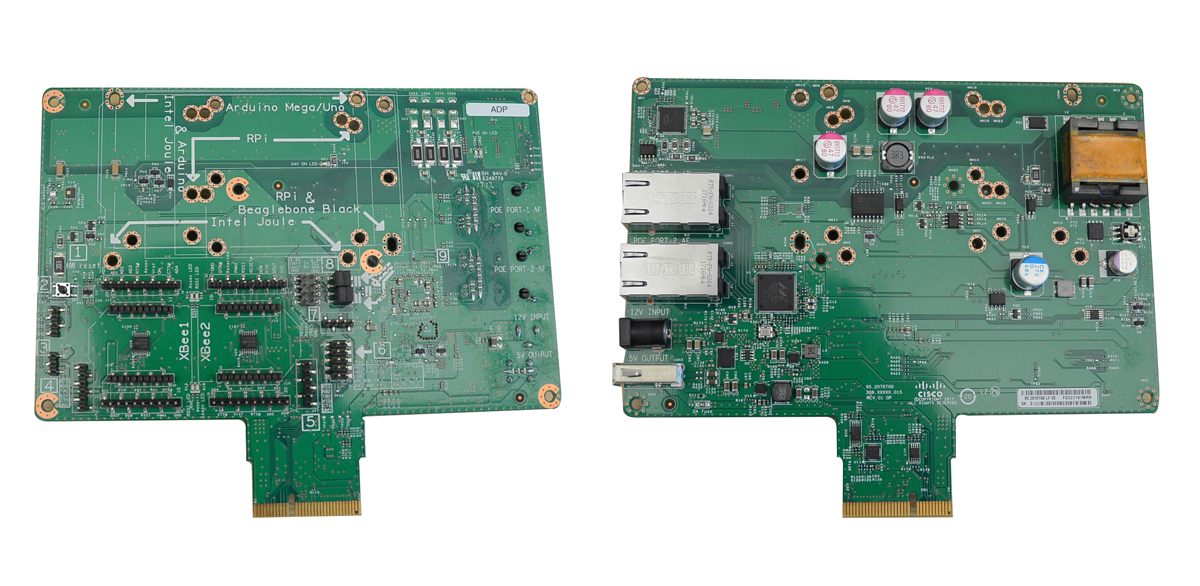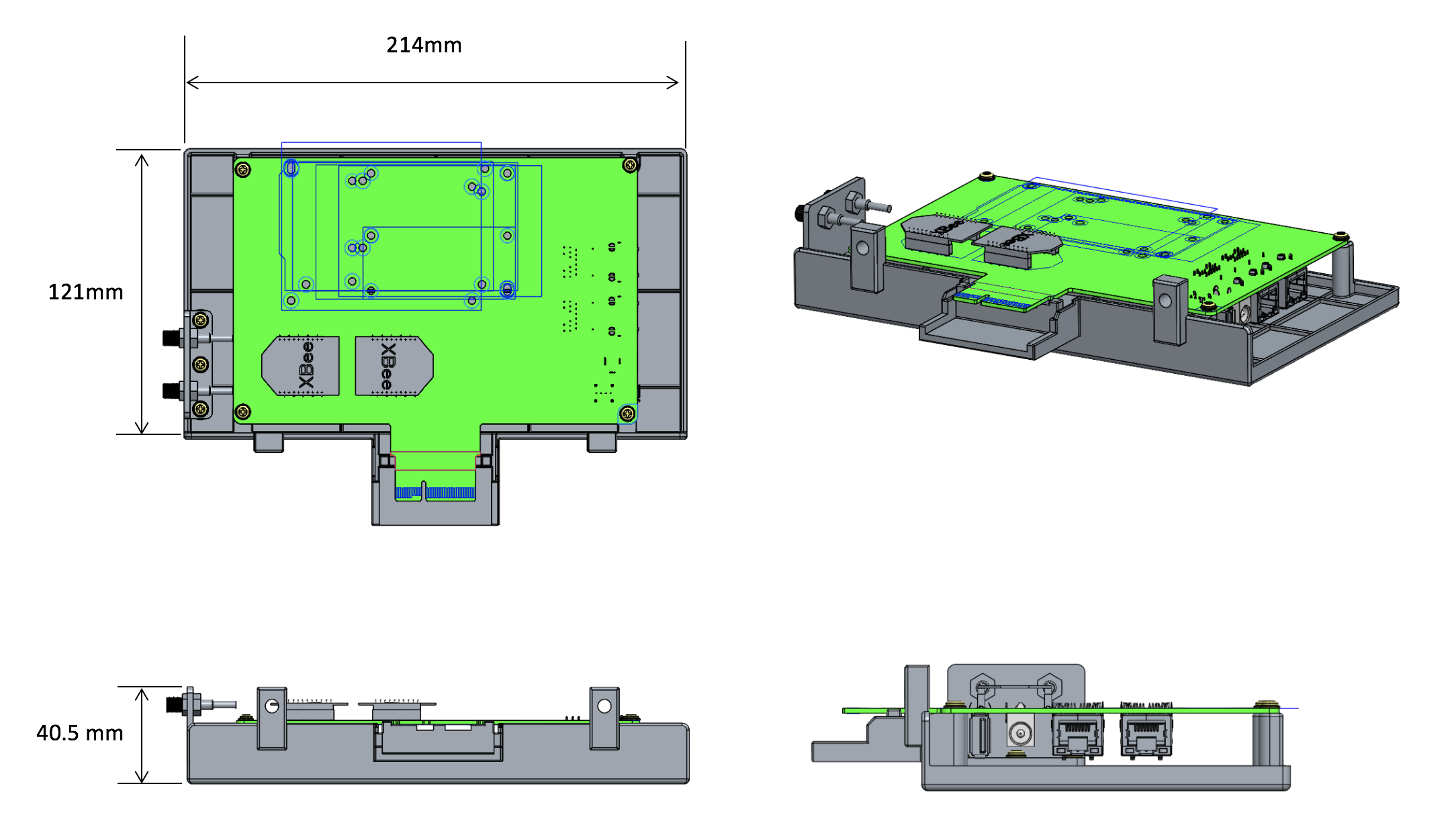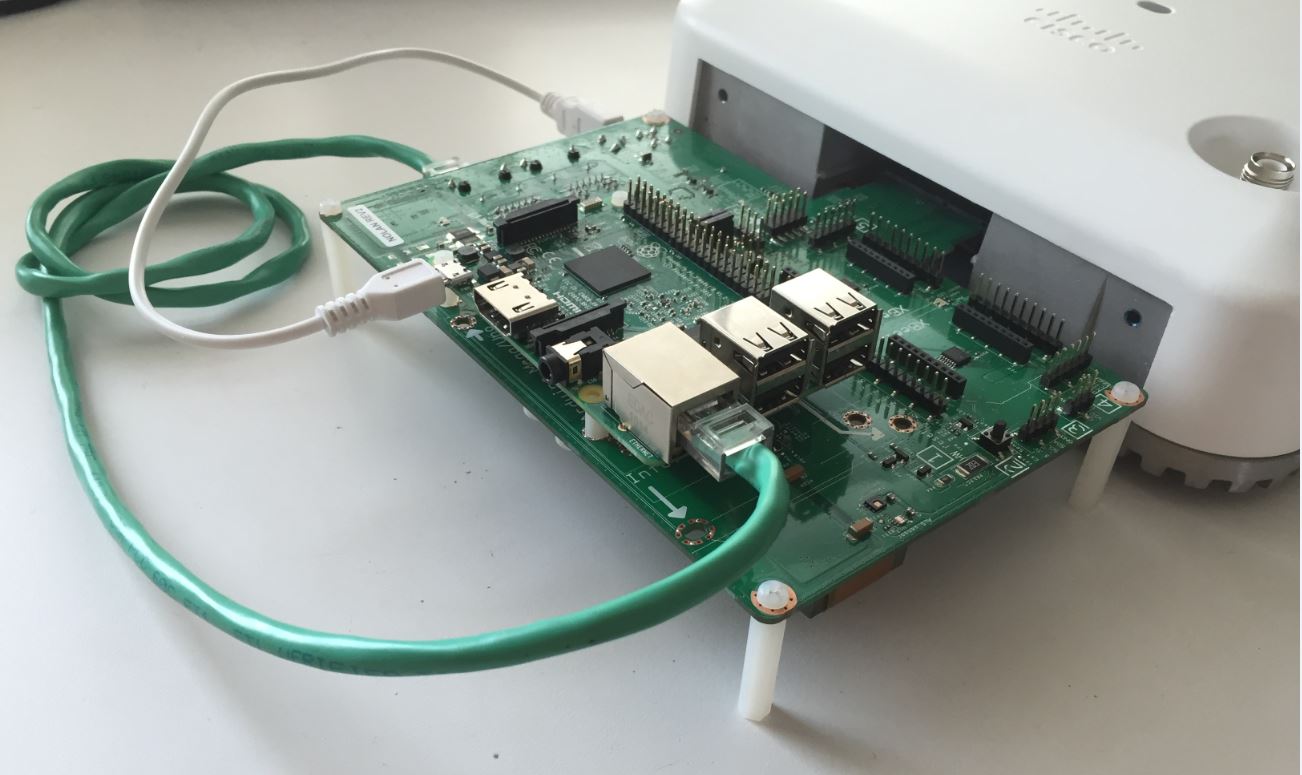Mounting and Installation
The HDK PCBA is primarily intended as an open-access prototyping board on a benchtop.
The HDK board must be mechanically supported when attached to the AP so a reliable host connection can be maintained.
Figure 1: Cisco Aironet Developer Platform HDK (Rev2)

Mounting tray
A mounting tray is used to mount the HDK and attach to the AP as a single assembly. It is suitable for temporary attachment of the HDK to the AP when installed the ceiling or for more robust attactment to the AP for demonstation purposes.
Note The tray is not designed to support heavy modules from the ceiling such as an Intel NUC.
- Four self-tapping screws secure the HDK PCB to the carrier.
- Two 5/8" 8-32 screws attach the assembly to the AP.
Figure 3: HDK Mounting Tray

Note You may print your own HDK mounting tray by downloading the 3D sample mechanical files from the Additional Resources section.
Standoffs / Spacers
For development work on a desktop, use four 30mm M3 or 4-40 standoffs attached to the four corners of the HDK.
Note This solution is not intended for permanent installations.

Figure 4: Spacer
